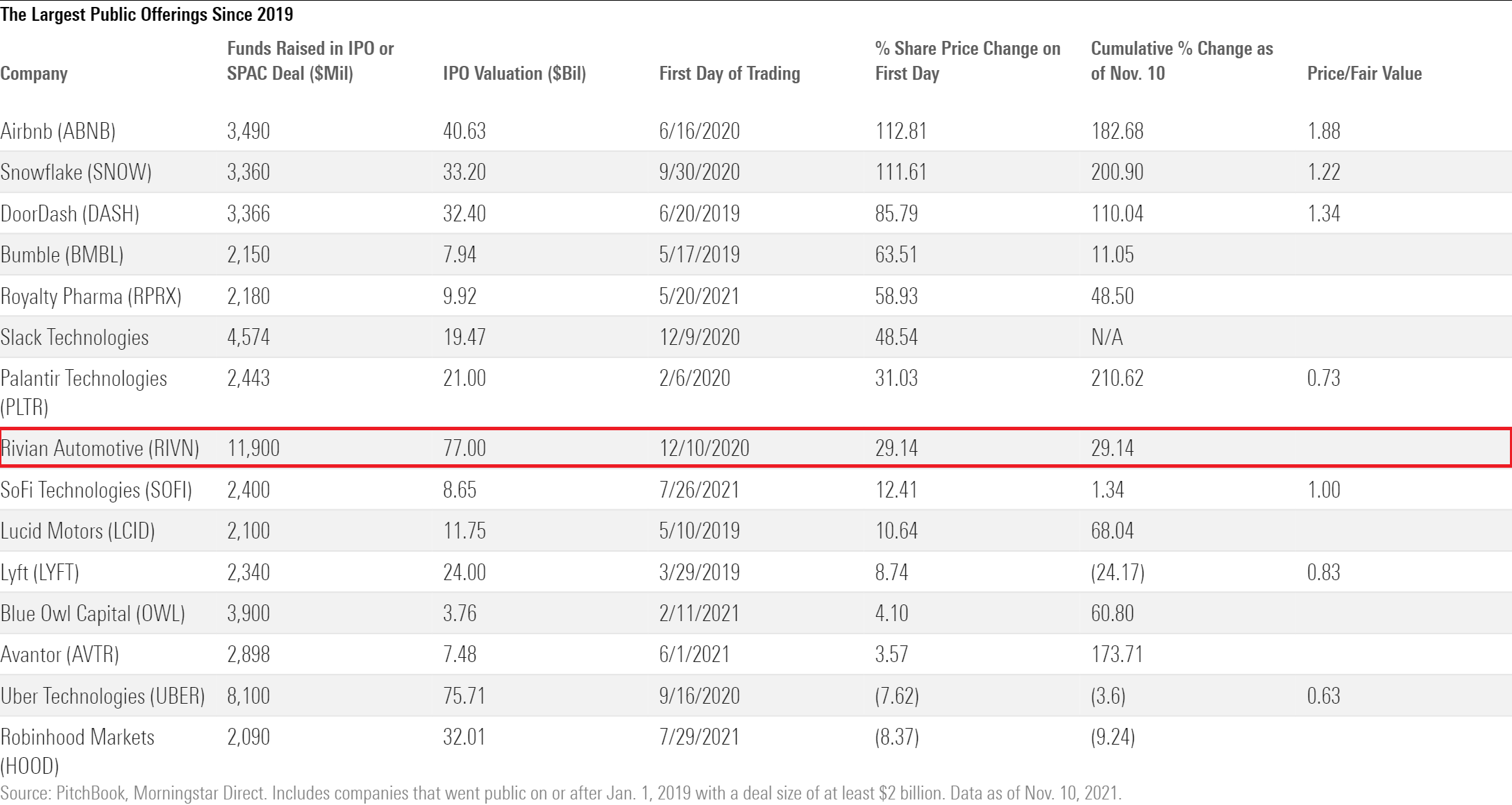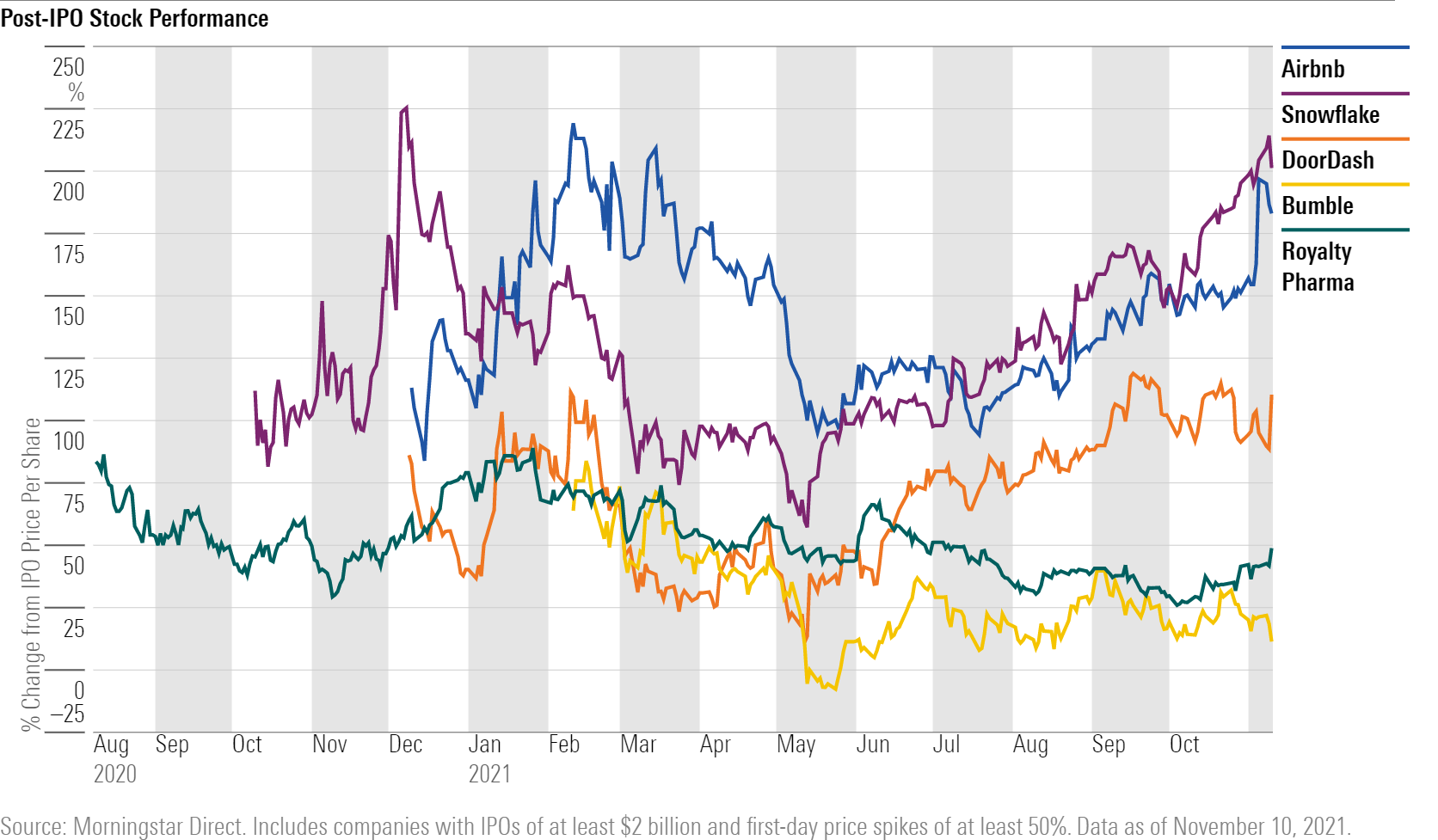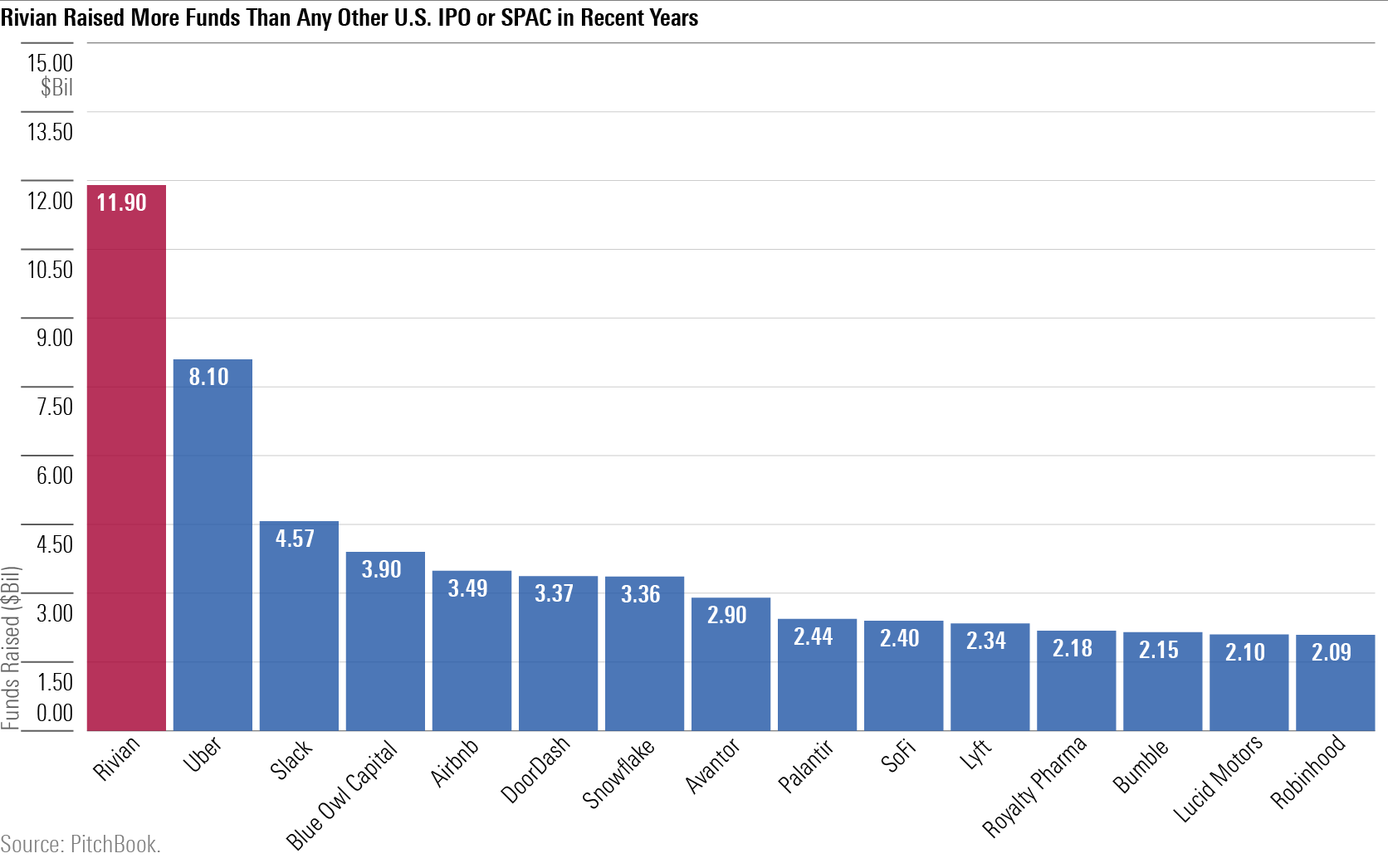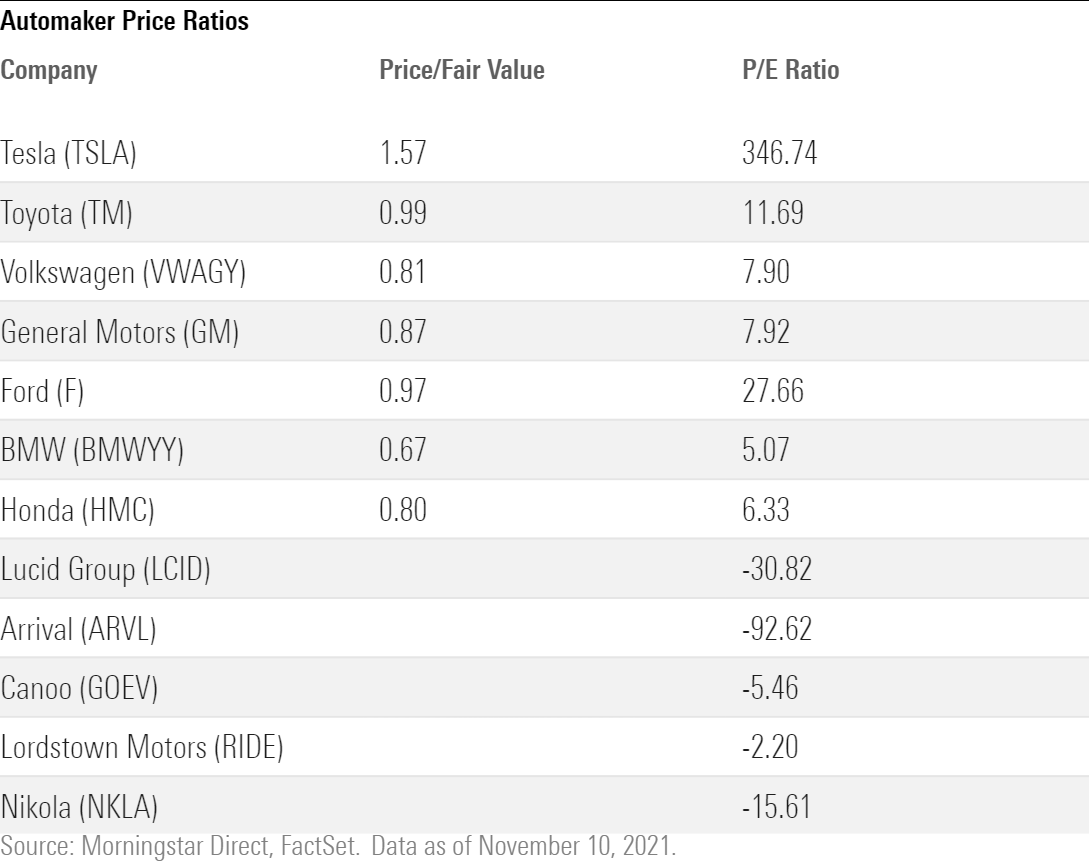What’s Next for Rivian After a Supercharged IPO?
Even with a sound business strategy, hot new stocks often run out of steam.

Rivian Automotive RIVN has had a supercharged debut as a stock, racing more than 50% above its initial public offering price in its first two days, including a nearly 30% pop on day one.
With this surge in its stock, the EV manufacturer joins the ranks of IPOs that have seen big rallies out of the chute. Having raised nearly $12 billion through the stock offering, the market is attaching a value to the company roughly equal to that of Ford F and General Motors GM--even though it has just begun producing vehicles for sale.
So for investors wondering whether to chase the rally, the history of IPOs such as Rivian’s is important to consider.
Hot IPOs often cool off significantly after the first few days of trading, leaving investors who jumped in after the stock went public sitting on losses. Plus, Rivian also joins the ranks of money-losing companies going public. While that doesn’t necessarily mean the stock will be a bad investment, it’s an important factor for investors to consider.
Morningstar's Seth Goldstein, who covers the EV industry, says that Rivian is entering into an intensely competitive space. "The difficulty for new companies, including Rivian, won't be designing a new EV. Instead, the challenge will be to profitably be able to mass-produce an EV at a low-enough cost to become profitable." That's in part why Goldstein believes investors will find better opportunities to play the shift toward EVs within the supply chain, such as raw materials, specialty chemicals, and parts suppliers.
However, Goldstein believes that Rivian could benefit from its focus on consumer trucks and commercial delivery vehicles. “The focus on commercial delivery vehicles is a good idea as EVs save companies expenses on a total cost of ownership basis. This creates the business case for delivery companies to use EVs for shorter fixed routes in cities. All in all, if Rivian is able to successfully scale its manufacturing and reduce unit costs, the company’s strong demand end markets should allow it to reach profitability.”
In the meantime, what’s next for Rivian? Will its share price momentum continue or will it run out of charge?
IPO Spikes Are Often Short-Lived
Among the largest IPOs of the last three years, a handful of companies saw similar investor enthusiasm to Rivian on their first day of trading. Airbnb ABNB and database software company Snowflake SNOW both ended their first day of trading at over double their IPO price.

It’s common for investor enthusiasm to wane after an IPO is no longer fresh and new, especially if the first trading day saw a major price spike. The companies with the largest first-day spikes rarely maintain that momentum.

The chart below shows the cumulative returns of companies that had the biggest IPO pops with and without the first day of trading. Excluding the first day of trading paints a very different picture of the stock performance. Since few individual investors are able to buy in at the IPO price, the return since the first trading day’s close may better represent an individual investor’s experience.

Rivian’s Record IPO
Rivian’s IPO earned the company a whopping $11.9 billion, the largest public offering that the U.S. has seen in over five years. The automaker surpassed Uber UBER to take the top spot.

At the end of its first trading day, Rivian was valued at $86 billion, making it the third largest newly public company in the U.S. Fellow EV manufacturer Lucid Motors LCID, which went public in July, also makes the list that mostly consists of tech names.

Make Way, Tesla?
Ultimately, what matters most for Rivian's outlook is how the company will fare in an increasingly crowded market for EV producers.
Despite only recently delivering its first vehicles, Rivian has a larger market cap than Ford, one of its largest investors. In 2020, Ford sold nearly 4 million vehicles in the U.S. alone; Rivian’s working plant is equipped to produce 150,000 vehicles a year. While the valuation may not touch that of Tesla TSLA, which passed $1 trillion, $86 billion is an impressive feat for a company that is still years away from potentially becoming profitable.

In addition, when it comes to valuations among auto manufacturers, traditional automakers--most of which are also competing in the EV market--trade at or below Morningstar analysts' estimates of the companies’ worth. Tesla, meanwhile, trades at extremely lofty levels to both its Morningstar fair value estimate and when compared with earnings. Of course, boosters of EV-focused companies such as ARK Investment’s Cathie Wood contends that demand and production of EVs will rise faster and sooner than is currently expected, making high valuations warranted.
Morningstar’s analysts do not currently cover other EV producers, and those companies--like Rivian--have reported losses, leading them to have negative price/earnings ratios. (Rivian does not yet have a consensus earnings estimate for 2021, so we're not showing its P/E ratio.)

So far, Rivian has fared far better in its public debut than many EV startups, largely because the company has demonstrated that it can, in fact, produce a product and successfully bring it to market. Other EV startups that chose to go public via SPAC rather than an IPO went public before bringing a product to market, and investor sentiment cooled quickly in the face of uncertain production. Lucid Motors has just started to attract investor attention thanks to the delivery of its Air sedan.


/s3.amazonaws.com/arc-authors/morningstar/96c6c90b-a081-4567-8cc7-ba1a8af090d1.jpg)
/s3.amazonaws.com/arc-authors/morningstar/ed529c14-e87a-417f-a91c-4cee045d88b4.jpg)
/cloudfront-us-east-1.images.arcpublishing.com/morningstar/2UWGQD7LCJCYNF3WQ5HHLP7UBE.jpg)
/cloudfront-us-east-1.images.arcpublishing.com/morningstar/WC6XJYN7KNGWJIOWVJWDVLDZPY.png)
/cloudfront-us-east-1.images.arcpublishing.com/morningstar/HHSXAQ5U2RBI5FNOQTRU44ENHM.jpg)
:quality(80)/s3.amazonaws.com/arc-authors/morningstar/96c6c90b-a081-4567-8cc7-ba1a8af090d1.jpg)
:quality(80)/s3.amazonaws.com/arc-authors/morningstar/ed529c14-e87a-417f-a91c-4cee045d88b4.jpg)